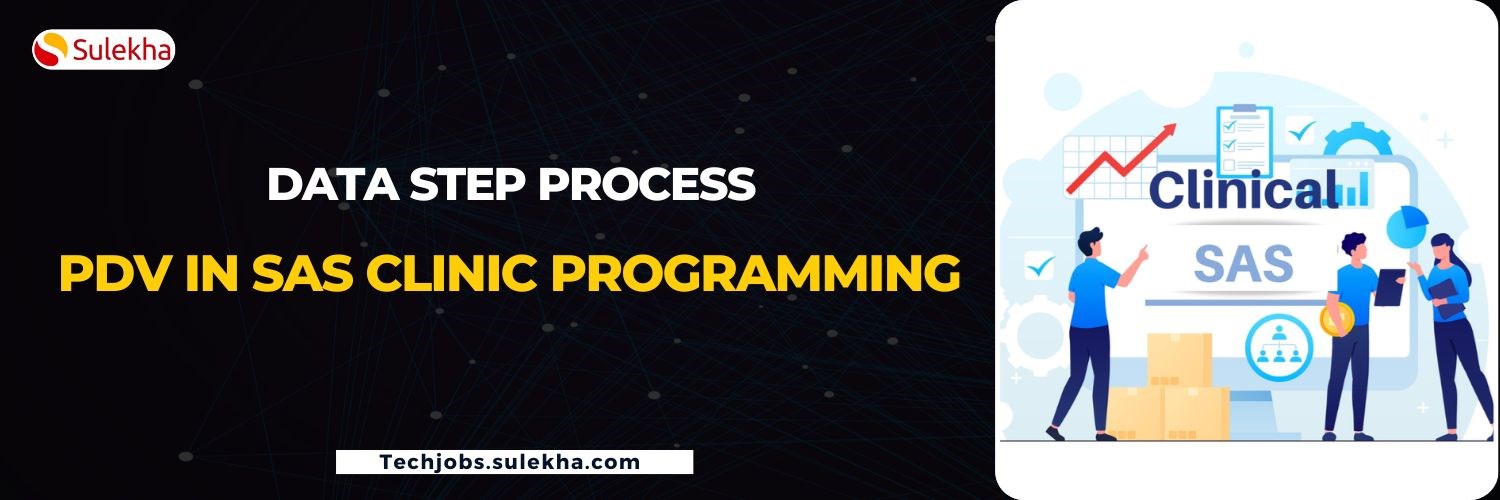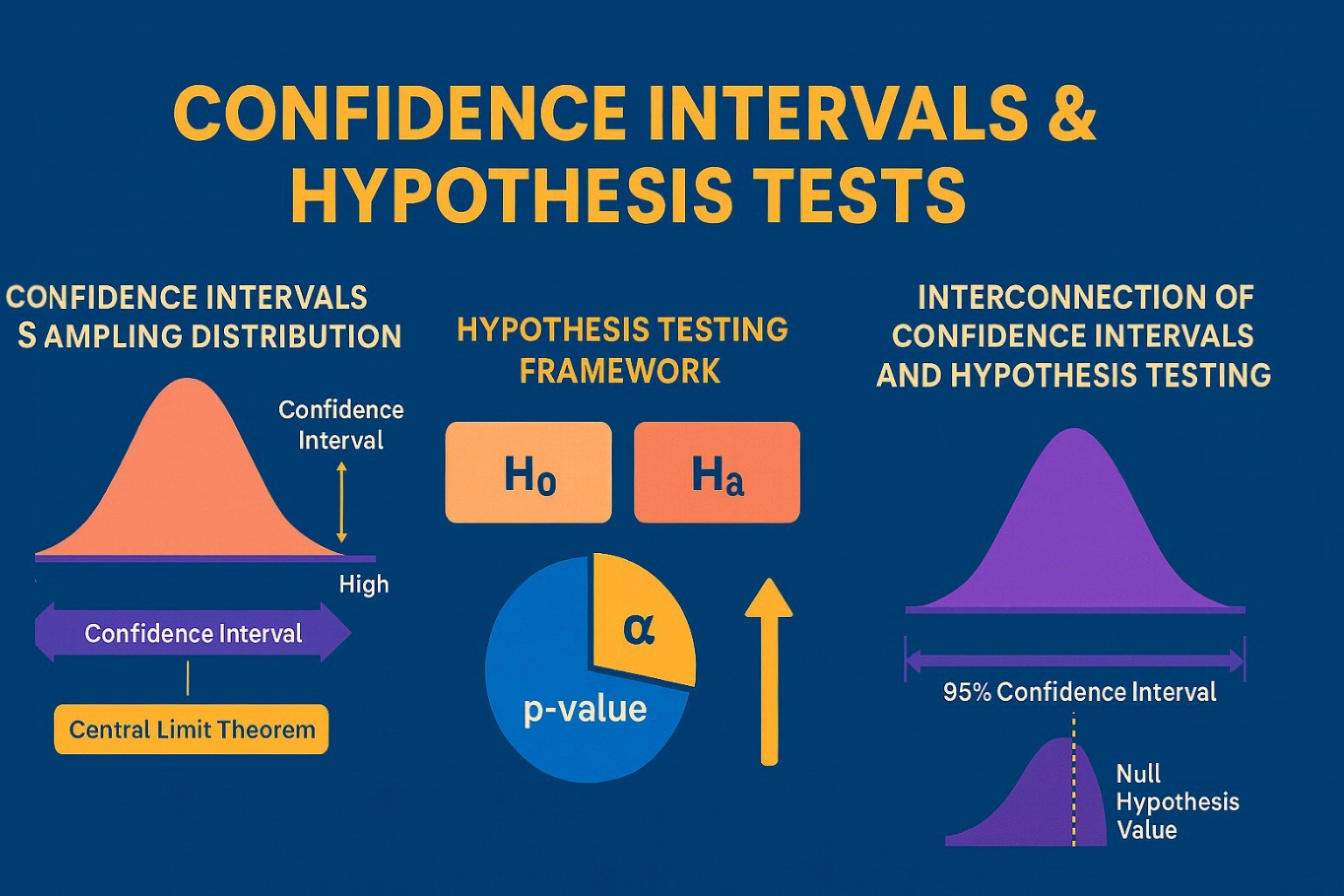IMPORTANCE OF UNDERSTANDING DATA STEP PROCESS AND PDV IN SAS CLINIC PROGRAMMING

Understanding the Data Step Process and Program Data Vector (PDV) is crucial in the context of programming in SAS (Statistical Analysis System) because they form the foundation of data manipulation and transformation. The Data Step Process is a fundamental concept in SAS programming, serving as the core mechanism for reading, modifying, and creating datasets.
It enables data cleaning, restructuring, and feature engineering, which is essential to preparing data for analysis. The Program Data Vector (PDV) is an internal workspace that SAS uses to store and process data during the data step execution. A deep understanding of PDV is essential for effectively manipulating data, creating new variables, and controlling data flow within a program. Proficiency in these concepts empowers data analysts and programmers to harness the full potential of SAS for data preprocessing and analysis, ultimately leading to more accurate and insightful results.
To master the clinical SAS, you can join clinical SAS training, which help you have profound knowledge and skills to analyze and manage clinical data using SAS software.
When a program is submitted in the Editor window, SAS checks the program and processes the SAS statements and data. It then proceeds to translate the program statements into either executable machine code or intermediate code. The user generates data sets, invokes SAS Procedures as specified, outputs error warnings in the Log, and terminates the process.
During the execution of the SAS code, the SAS Supervisor possesses knowledge of the various forms and types of statements that may be encountered within a DATA step, as well as the sorts of statements and options that may be located inside a PROC step.
To execute a program, the SAS Supervisor has the task of scanning all the SAS statements and dividing each Statement into individual words. Tokens and tokenization occur in word scanning, wherein each word is handled independently. The execution of a step occurs once all the words within the step have been processed. When the SAS Supervisor detects a mistake, it is marked at its specific position, and an explanation is subsequently printed.
Flow of action in a datastep:
The Data Step comprises a collection of SAS statements that commence with a Data statement. When you submit a Data step for execution, SAS compiles and verifies the whole syntax that makes up the Data Step. In the event of a syntax issue, the program's execution halts, and an error message is generated and displayed in the SAS Log. If the syntax of the statements is accurate, then they will be executed. The Data step can be described as a loop that includes an automatic output and return action after each iteration.
Once the syntax review has concluded without detected errors, SAS generates an Input Buffer, a Program Data Vector, and Descriptor Information.
Input buffer:
The INPUT statement in SAS involves allocating a logical space in memory, where each raw data record is read during the execution process. It should be noted that the creation of this buffer occurs during the reading of raw data in the DATA stage. When the DATA step is executed to read an SAS data set, SAS directly reads the data into the program data vector.
Program Data Vector (PDV):
It is a logical memory space where SAS constructs a data set one observation at a time.
Descriptor Information:
SAS creates and stores information about each SAS data set, including data set properties and variable attributes. All executable statements in the Data Step are processed once for each observation. SAS reads a record into the Input Buffer if the input file contains raw data.
The values in the Input Buffer are then read by SAS and assigned to the appropriate variables in the Program Data Vector. SAS additionally calculates and stores values for variables produced by program statements in the Program Data Vector. SAS cycles back to the beginning of the Data Step syntax for the following observation when it reaches the end of the Data Step syntax for each observation.
The PDV has two automatic variables, _N_ and _ERROR_, in addition to the data set and computed variables. The _N_ variable keeps track of how many times the DATA step iterates. The _ERROR_ variable indicates a data-related error during execution. _ERROR_ has a value of either 0 (meaning that no errors exist) or 1 (showing that one or more errors have occurred). These variables are not written to the output data set by SAS.
The program data vector is a memory location that stores all variables encountered by the data step. The order of the variables in the program data vector is defined by the order in which they appear. These variables may include signs indicating they should be Kept, Dropped, or Renamed. The processed observation is stored in the program data vector when the program runs. The data are printed at the end of the step based on the Drop, Keep, or Rename instructions detected in the program.
SAS generates the program data vector during compilation. The variables in the input data set and those created in the DATA step instructions are all included in the program data vector. The DATA phase begins with automated variables on its own. The following are examples of automatic variables:
· Retained from one iteration of the DATA step to the next
· Not written to the output data set
· Cannot be kept, dropped, or renamed
Processing a DATA Step, a Walkthrough
Data Test (Drop= Pulse_M Pulse_N Pulse_E);
Put _all_;
Input Patid Sex $1. Trt$ Pulse_M Pulse_N Pulse_E ; Avg_Pulse= (Pulse_M + Pulse_N+ Pulse_E)/3;
Put _all_;
Datalines;
101 F Placebo 88 100 94
102 M Active 100 96 104
103 F Active 78 84 81
;
Run;
The input buffer and LPDV are configured at build time, and variables are added to the LPDV based on how the INPUT and assignment parameters are created.
The purpose of the PUT __ALL__ statements will become apparent at execution time when they dump the LPDV contents to the LOG before and after the user-written statements are executed.
The LPDV obtained encompasses all the requisite information for the descriptor component of the SAS data set. It is essential to observe that the LPDV provides details regarding the variables being written to the SAS data set that is being formed based on the default activities of DATA phase Processing. The ability to override these conditions can be made simpler by utilizing DROP and KEEP statements or applying data set options. The LPDV additionally monitors the variables that are retained.
It should be noted that all variables in the LPDV (Linear Programming Data Vector) are initialized to a missing value at the start of each execution, except the variable __N__, which is automatically retained.
It is essential to observe that the DATA step will attempt to execute for a fourth time, resulting in the LPDV being displayed in the LOG for __N__=4. The step will encounter failure when the INPUT statement is executed for the fourth time, as additional input data are absent.
When the execution loop is applied to the processing of SAS data, variations can be observed. The LPDV will be consistently displayed in the LOG using the PUT __ALL__ statements. The DATA phase is accessing the data set 'Test' generated in the preceding step.
DATA R_test;
Put _all_;
Set Test;
Tot_rec+1;
Put _all_;
Run;
During the compilation phase, the SET statement retrieves the descriptor section of the input SAS data set to initiate the construction of the logical program data vector (LPDV). The program retrieves the variables and their corresponding characteristics. As the following SAS statements meet the criteria, additional variables will be incorporated into the LPDV. The SUM statement is used to compute the TOT_REC value in this situation.
It should be noted that all variables in the Linear Program Decision Variables (LPDV) will be retained. The variables Patid, Sex, and Trt will be automatically retained because they are included in the SET statement during the reading process. TOT_REC is retained because it is the accumulator variable in a SUM statement (one of the features of the SUM statement is an implied retain).
Types of Errors in SAS Syntax Error: Compilation phase
♦ Misspelled keyword
♦ Omitted semicolon
♦ Statement is not valid, or it is utilized in proper order
Execution Time Errors: Execution Phase
♦ Illegal mathematical operations
♦ Observations out of order for BY-group Processing
♦ An incorrect citation within an INFILE statement, such as a misspelling or an inaccurate specification of the external file.
Data Errors: Execution Phase
♦ Data in wrong columns
♦ Invalid data
Semantic Errors: Execution Phase
♦ Specifying the wrong number of arguments for a function
♦ Using a libref that has not yet been assigned
♦ Using a numeric variable name where only character variables are valid.
Common Automatic Variables
_N_: The number of times the Data step has iterated _ERROR_: This statement determines whether an error has been encountered during the execution of the data phase. The numerical output will be zero if no errors occur. A value of 1 will be determined if one or more mistakes have occurred.
First. BY Variable and Last. BY Variable:
Temporary variables are consistently seen in pairs, with each pair corresponding to a BY variable specified in a BY statement. The values assigned to conditions are often represented as 1 (True) or 0 (False) to indicate their relative truth or falsity. Temporary variables are
generated by employing specific SAS options and statements. Unlike automated variables, these temporary variables are not recorded in the output data set.
IN= variable: The "IN" option determines if a specific data set has contributed to the present observation. The user designates a variable name accompanied by an option that will be assigned a value of 1 if the data set contributed to the observation or 0 if it did not.
END= Variable:
The "END" option is a parameter of the SET statement that signifies the completion of the input data. The variable "name" is assigned a value of 1 to indicate the completion of data processing and 0 to indicate the ongoing data processing.
The SET statement allows for the specification of only one END= option. Suppose multiple data sets are specified in the SET statement. In that case, the END= variable will be assigned a value of 1 upon reading the final observation from the last data set.
User-defined variables can be assigned the value of automatic and temporary variables if it is necessary to have their values in the output data set.
In conclusion, they understand the Data Step process and PDV is crucial for anyone working with SAS software. It allows users to manipulate and transform data efficiently, resulting in accurate and reliable analysis. The PDV provides a powerful tool for debugging and troubleshooting, making it easier to identify errors and improve output quality. By mastering these concepts, users can streamline their workflow and achieve better results in less time, leading to more informed decision-making and improved business outcomes.
Find a course provider to learn SAS Clinicals
Java training | J2EE training | J2EE Jboss training | Apache JMeter trainingTake the next step towards your professional goals in SAS Clinicals
Don't hesitate to talk with our course advisor right now
Receive a call
Contact NowMake a call
+1-732-338-7323Enroll for the next batch
SAS Clinicals Training With Placement
- Dec 15 2025
- Online
SAS Clinicals Training With Placement
- Dec 16 2025
- Online
SAS Clinicals Training With Placement
- Dec 17 2025
- Online
Clinical SAS programmer Training
- Dec 18 2025
- Online
Clinical SAS programmer Training
- Dec 19 2025
- Online
Related blogs on SAS Clinicals to learn more

SAS clinical trials -What Are Clinical Trials and Studies?
Learn how SAS (Statistical Analysis System) supports clinical trials by analyzing data, ensuring regulatory compliance, and transforming raw data into actionable insights for drug efficacy and safety.

Benefits of using SAS in Clinical Research!
In addition to achieving complete view on the patient data and readmission patterns, SAS Clinical software provides access to all relevant clinical and nonclinical data for real-time decisions. And a better understanding of your clinical performance.

Why SAS Clinical Is A Perfect Choice For Scientific Career Opportunities
Clinical SAS programming helps students to learn basic as well as advanced SAS clinical concepts. The programming is mainly used for doing clinical analysis and managing clinical and scientific research data files. It enables to generate and cross st
Latest blogs on technology to explore

From Student to AI Pro: What Does Prompt Engineering Entail and How Do You Start?
Explore the growing field of prompt engineering, a vital skill for AI enthusiasts. Learn how to craft optimized prompts for tools like ChatGPT and Gemini, and discover the career opportunities and skills needed to succeed in this fast-evolving indust

How Security Classification Guides Strengthen Data Protection in Modern Cybersecurity
A Security Classification Guide (SCG) defines data protection standards, ensuring sensitive information is handled securely across all levels. By outlining confidentiality, access controls, and declassification procedures, SCGs strengthen cybersecuri

Artificial Intelligence – A Growing Field of Study for Modern Learners
Artificial Intelligence is becoming a top study choice due to high job demand and future scope. This blog explains key subjects, career opportunities, and a simple AI study roadmap to help beginners start learning and build a strong career in the AI

Java in 2026: Why This ‘Old’ Language Is Still Your Golden Ticket to a Tech Career (And Where to Learn It!
Think Java is old news? Think again! 90% of Fortune 500 companies (yes, including Google, Amazon, and Netflix) run on Java (Oracle, 2025). From Android apps to banking systems, Java is the backbone of tech—and Sulekha IT Services is your fast track t

From Student to AI Pro: What Does Prompt Engineering Entail and How Do You Start?
Learn what prompt engineering is, why it matters, and how students and professionals can start mastering AI tools like ChatGPT, Gemini, and Copilot.

Cyber Security in 2025: The Golden Ticket to a Future-Proof Career
Cyber security jobs are growing 35% faster than any other tech field (U.S. Bureau of Labor Statistics, 2024)—and the average salary is $100,000+ per year! In a world where data breaches cost businesses $4.45 million on average (IBM, 2024), cyber secu

SAP SD in 2025: Your Ticket to a High-Flying IT Career
In the fast-paced world of IT and enterprise software, SAP SD (Sales and Distribution) is the secret sauce that keeps businesses running smoothly. Whether it’s managing customer orders, pricing, shipping, or billing, SAP SD is the backbone of sales o

SAP FICO in 2025: Salary, Jobs & How to Get Certified
AP FICO professionals earn $90,000–$130,000/year in the USA and Canada—and demand is skyrocketing! If you’re eyeing a future-proof IT career, SAP FICO (Financial Accounting & Controlling) is your golden ticket. But where do you start? Sulekha IT Serv

Train Like an AI Engineer: The Smartest Career Move You’ll Make This Year!
Why AI Engineering Is the Hottest Skillset Right Now From self-driving cars to chatbots that sound eerily human, Artificial Intelligence is no longer science fiction — it’s the backbone of modern tech. And guess what? Companies across the USA and Can

Confidence Intervals & Hypothesis Tests: The Data Science Path to Generalization
Learn how confidence intervals and hypothesis tests turn sample data into reliable population insights in data science. Understand CLT, p-values, and significance to generalize results, quantify uncertainty, and make evidence-based decisions.